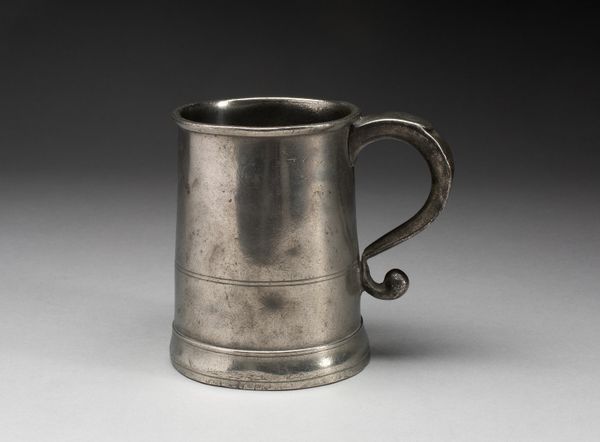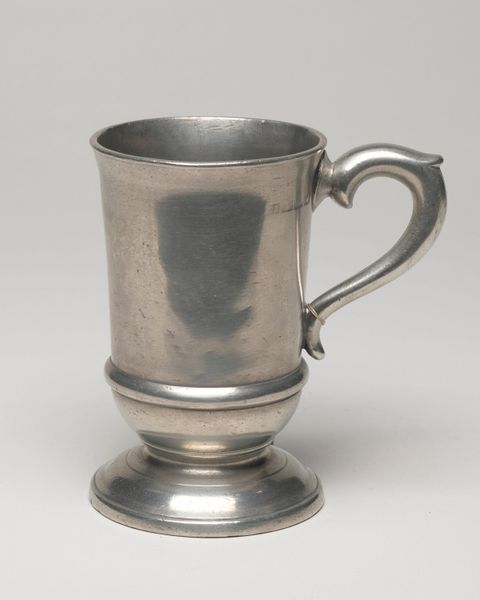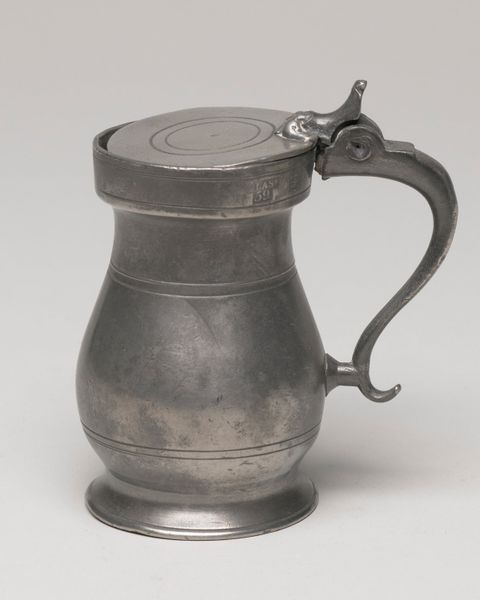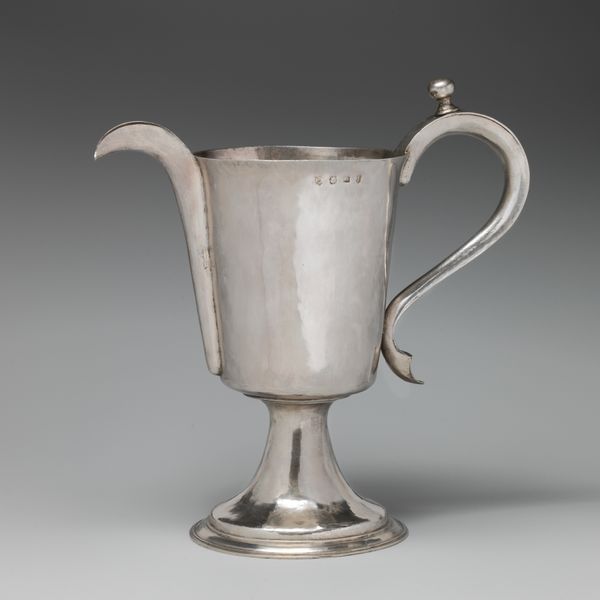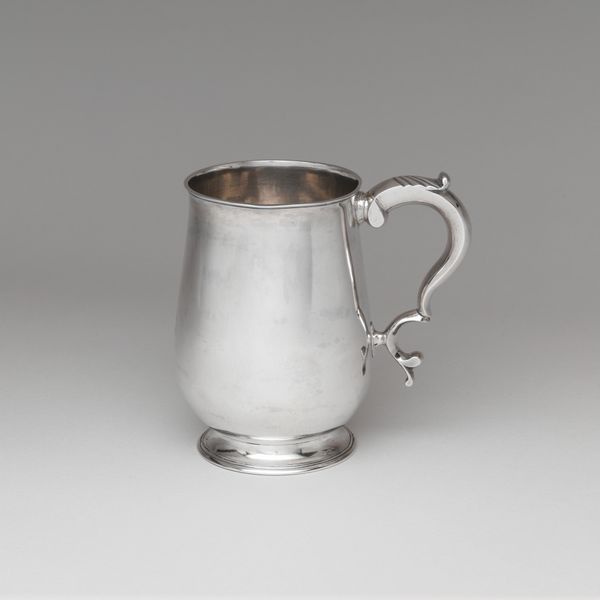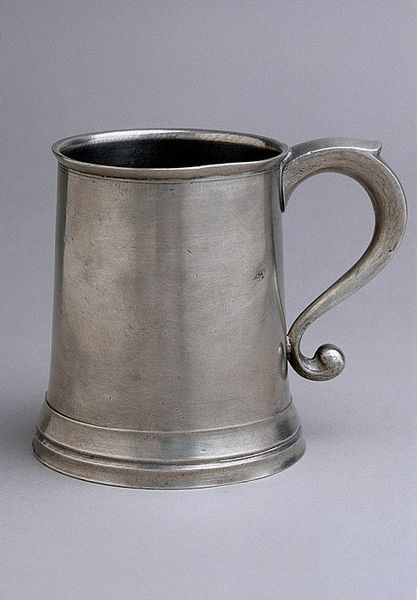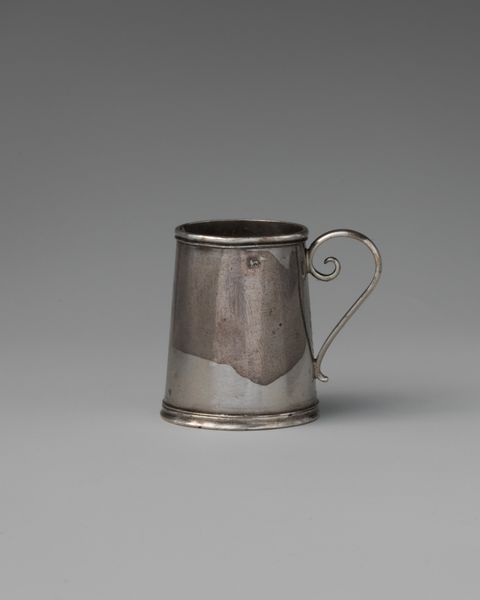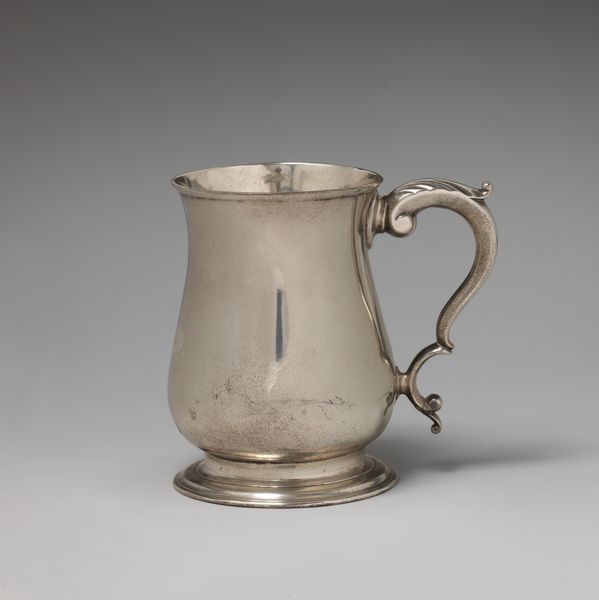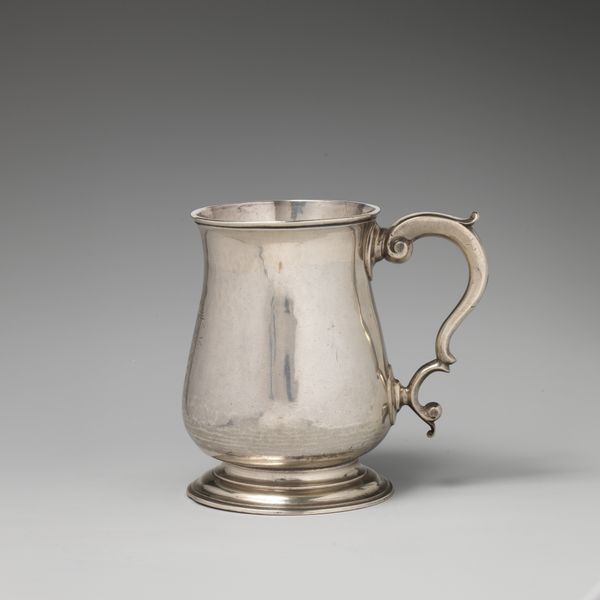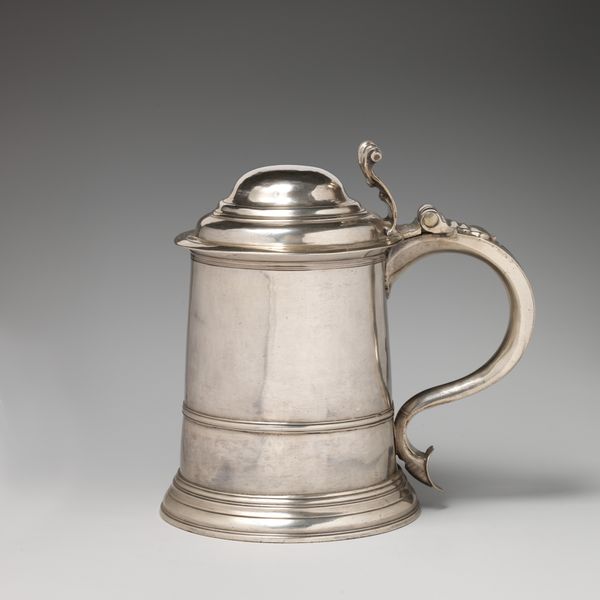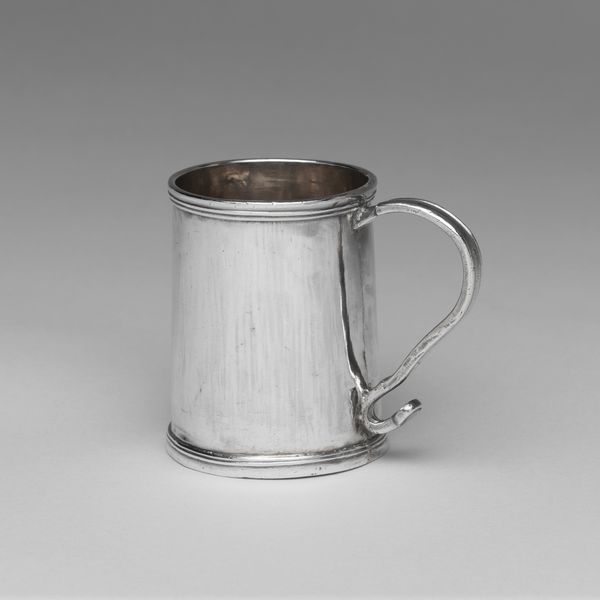
metal, photography
#
metal
#
photography
#
stoneware
#
england
#
product photography
Dimensions: 4 7/8 x 5 1/4 x 3 7/8in. (12.4 x 13.3 x 9.8cm)
Copyright: Public Domain
Curator: The Minneapolis Institute of Art holds this fascinating piece: an 18th-century English tankard. Crafted in metal by an anonymous artisan, its very form speaks volumes. What do you make of it? Editor: My first thought is of simple pleasures, the camaraderie of a pub, a hearty toast shared among friends. There's something profoundly grounding about its weighty, solid appearance. Curator: Absolutely. The tankard, especially in 18th-century England, was central to social life. Consider the politics intertwined with every pint! Alehouses were vital public spaces, often doubling as meeting places for guilds or even radical political groups. Editor: It's the pewter color, perhaps dulled by age, that resonates. Pewter carries the weight of tradition and unpretentiousness; a democratic spirit somehow ingrained in the metal itself. I imagine the countless hands that have held a similar vessel, the songs sung, the tales told over countless refills. Curator: Exactly! The tankard moves beyond a mere drinking vessel. It's a touchstone of national identity and local culture. Even the rise of gin during that era led to moral panics – debates playing out very publicly in print and in parliament. The humble tankard remained an emblem of ‘good’, honest Englishness. Editor: I keep being drawn to the handle; it’s almost ornate compared to the body of the tankard. That subtle flourish adds a layer of personality, a visual representation of pride in craftsmanship. It hints at an artisan who cared not just about function, but about the daily ritual the tankard represented. Curator: Indeed. Artisans like the anonymous maker of this piece played a vital role in shaping cultural life. The tankard represents not only their individual skill but also their contribution to this grand theater of public life. Editor: Looking at this unassuming tankard now, one realizes how objects like this become silent witnesses to history. It reminds us of the beauty to be found in everyday objects and of the stories they carry within them. Curator: And a reminder that, whether celebrating triumphs or discussing troubles, there’s always a social and cultural context interwoven with even the simplest artifact.
Comments
No comments
Be the first to comment and join the conversation on the ultimate creative platform.
